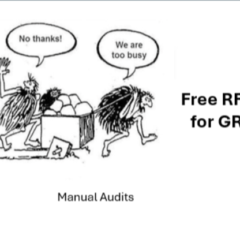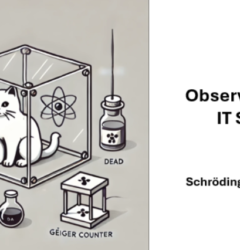What Are Control Gaps in IT Security?
Control gaps are the unseen cracks in an organization’s cybersecurity defenses—missing, weak, or misconfigured measures that fail to safeguard against evolving threats. They might be as simple as an unpatched system, an overly permissive user account, or a failure to monitor sensitive assets. Individually, these gaps may seem minor, but together, they can create a breach that floods an organization with cyberattacks.
The challenge with control gaps is their subtlety. Like the trickle of water in the Little Dutch Boy’s story, they often go unnoticed until the damage becomes unmanageable. And in today’s hyperconnected world, even a small trickle can lead to a deluge.
The “Dike” Challenge
Long ago, in a small village nestled by the sea, a boy noticed a trickle of water escaping from the dike protecting his town. The dike, a massive wall of stone and earth, was all that stood between the town and a devastating flood. The boy, realizing the danger, pressed his finger into the hole, stopping the water. But as the night wore on, more holes appeared. Alone in the cold, he fought to keep the town safe. The boy’s bravery saved the day, but it taught the villagers an important lesson: the wall wasn’t as strong as it seemed, and their vigilance couldn’t stop every crack on its own.
In today’s digital world, every organization faces its own “dike” challenge. Instead of holding back the sea, these walls—firewalls, access controls, encryption, and policies—stand guard against relentless waves of cyber threats. But just like the dike in the boy’s village, these defenses are not impervious. Hidden within them are small, invisible vulnerabilities: control gaps.
The Relentless Storm of Cyber Threats
Cyber threats are like the relentless sea—dynamic, ever-changing, and constantly probing for weaknesses. Control gaps are what attackers look for, and they’re often found in areas like:
- Unpatched Software: Outdated systems with known vulnerabilities.
- Misaligned Controls: Policies and processes that don’t match organizational needs or threats.
- Access Management Issues: Excessive user permissions or forgotten accounts.
- Compliance Failures: Missing safeguards required by frameworks like ISO 27001, NIST, or GDPR.
Organizations often believe their security “walls” are strong, but the truth is many of these gaps remain hidden, waiting for the right conditions to erupt into a flood of ransomware, data breaches, or operational disruptions.
Why It’s Difficult to Stop Cyber Threats
In the story of the Little Dutch Boy, the boy was alone, plugging holes as they appeared. Similarly, cybersecurity teams often find themselves overwhelmed. A few reasons for this challenge include:
- Scale of Threats: Modern organizations have vast networks with countless endpoints, making it nearly impossible to monitor everything manually.
- Speed of Change: New vulnerabilities emerge faster than they can be addressed, especially when gaps are discovered too late.
- Human Limitations: Even the most vigilant teams can overlook small cracks in the wall, especially under pressure or with limited resources.
- Complex Compliance Requirements: Mapping controls to regulatory requirements is time-consuming and error-prone without automation.
The Key Lesson: Don’t Wait for the Flood
Just as the villagers learned from the Little Dutch Boy’s bravery, organizations must understand that plugging control gaps reactively is not enough. A proactive approach is essential to prevent the “trickles” of vulnerabilities from becoming floods. The solution lies in automation and continuous control gap assessment.
How Automation and Continuous Assessments Save the Day
Early Identification of Gaps:
- Automation tools continuously scan systems for misconfigurations, outdated patches, or missing safeguards.
- They alert teams in real-time, enabling faster responses before threats exploit these weaknesses.
Dynamic Threat Adaptation:
- Automated systems adapt to new threats, constantly reevaluating and strengthening security measures.
- This ensures that gaps don’t persist, even as the landscape evolves.
Streamlined Compliance:
- Automation aligns security controls with regulatory frameworks, making audits simpler and more efficient.
- Continuous assessments prevent last-minute scrambles to meet compliance requirements.
Reduced Human Error:
- By taking repetitive tasks off the hands of cybersecurity teams, automation ensures consistency and precision, reducing the likelihood of gaps being overlooked.
The Cybersecurity Moral: A Stronger Dike
The Little Dutch Boy’s courage saved his town, but it also revealed the fragility of their defenses. Similarly, every cybersecurity incident caused by a control gap should remind organizations of the need to strengthen their “dikes.” Proactive measures, driven by automation and continuous assessments, can fortify defenses and keep the rising tide of cyber threats at bay.
So, as you think about your organization’s walls, ask yourself: are you relying on a finger in the hole, or are you building a system that ensures the gaps are never there in the first place? The choice could make all the difference when the storm arrives.













Recent Comments